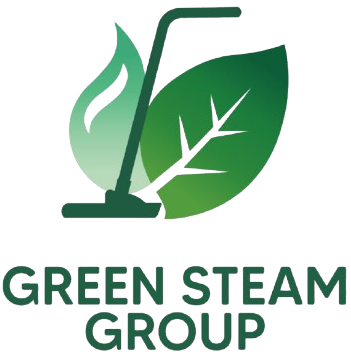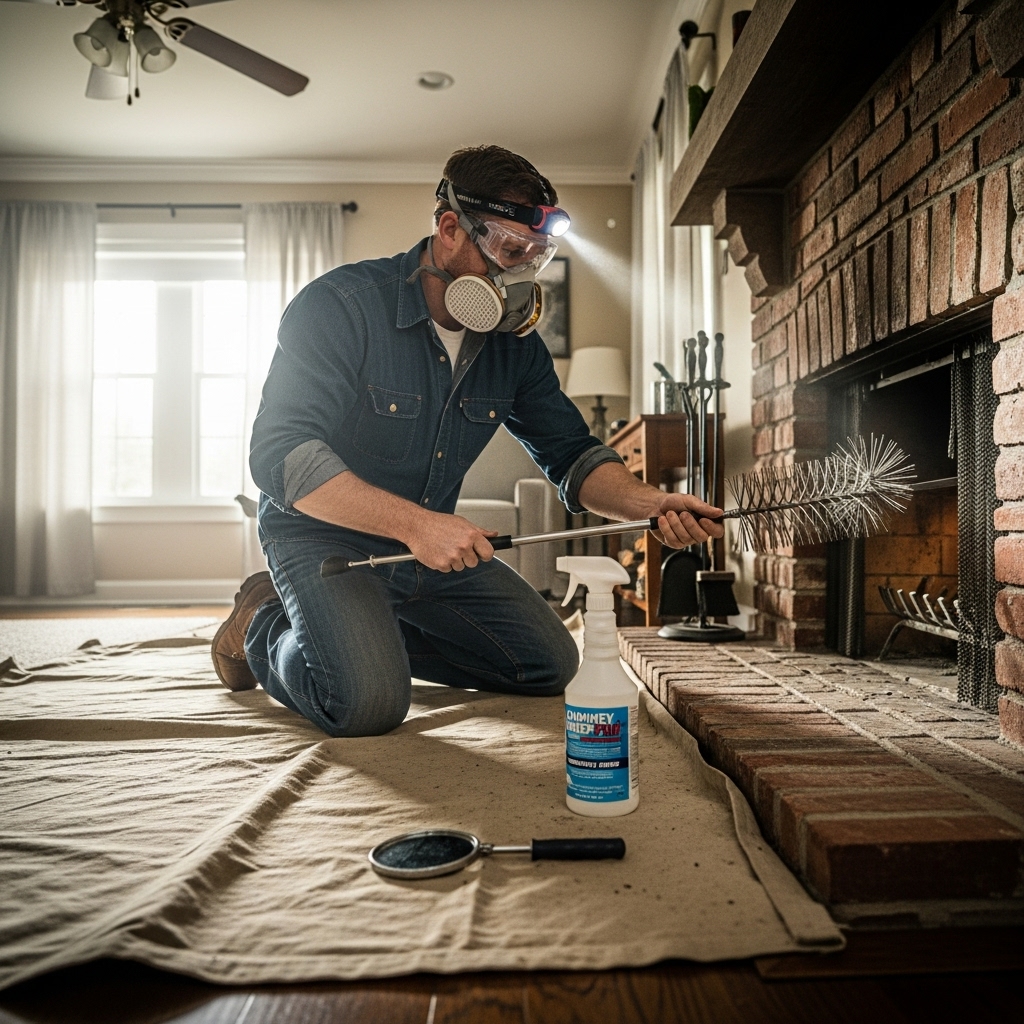Starting chimney maintenance can feel intimidating, especially if you’ve recently moved to Tampa or inherited a fireplace in a home you didn’t build. The good news is that with a basic understanding of how the system works and a simple routine, you can keep your chimney safer and your fires more enjoyable. This beginner’s guide explains the components, the risks of neglect, the tools you need, and the steps to clean and inspect a typical system. If you decide you’d rather have a professional handle the work, you can always schedule trusted chimney cleaning and gain confidence from expert documentation and advice.
Even in Florida’s warm climate, maintaining a chimney matters. Tampa’s humidity, coastal breezes, and periodic storms create a unique environment that can accelerate rust, wear on caps and flashing, and trap odors. A little knowledge goes a long way toward preventing problems before they escalate.
How a Chimney Works
A chimney is a vertical passageway that carries combustion byproducts out of your home. Hot gases rise, creating draft that draws fresh air into the firebox. The system includes several key parts: the firebox where the fire burns; the damper that opens and closes to control airflow; the smoke chamber that narrows the path toward the flue; the flue liner that safely conveys smoke upward; and the cap and crown that keep rain and animals out. In factory-built systems, the components may be metal rather than masonry, but the principles are the same.
Draft depends on temperature differences, air pressure in the home, and the smoothness of the flue interior. Soot and creosote narrow the passage and create turbulence, reducing draft. Tampa’s humid air can also cool the flue quickly, creating condensation that mixes with soot and produces corrosive deposits. Cleaning restores the flue’s diameter and surface texture, improving performance and safety.
Risks of Skipping Chimney Maintenance
The most obvious risk is a chimney fire caused by ignited creosote. Even small, smoldering events can crack liners and spread heat into nearby structures. Other risks include smoke spillage into the home, carbon monoxide exposure, and moisture damage to masonry and framing. In Tampa, water intrusion is a big concern—heavy rains and wind-driven spray can exploit tiny gaps in crowns and flashings, leaving stains on ceilings or inside walls. Over time, rust flakes from damp metal components can accumulate in the firebox, signaling a problem you shouldn’t ignore.
Beginner-Friendly Tools and Supplies
You can accomplish a basic clean and inspection with a modest kit. Invest in quality protective gear and a properly sized brush for the flue.
- Respirator, safety glasses, and durable gloves.
- Canvas drop cloths and plastic sheeting to protect the room.
- HEPA shop vacuum with soot filter bags.
- Firebox and crevice brushes; handheld scraper for stubborn spots.
- Chimney brush matched to flue size and shape; fiberglass rods.
- Headlamp, inspection mirror, and smartphone camera for documentation.
- Masonry-safe cleaner for soot stains.
Preparation: Set the Stage for a Clean Job
Let the fireplace cool completely—preferably overnight. Move rugs and furniture, then lay drop cloths and tape plastic sheeting around the opening. Confirm the damper is closed before working on the roof to prevent soot falling into the room. If you have a cleanout door in the basement or at the base of the chimney, open it and set a bucket and vacuum nearby to catch debris later.
Step-by-Step Cleaning for Beginners
Follow these steps, and take your time. If anything feels beyond your comfort level, stop and call a professional.
- Remove ash and loose debris from the firebox using a metal scoop and the HEPA vacuum.
- Brush the firebox walls and hearth; spot-clean with masonry-safe products.
- Open the damper and brush the throat area; vacuum the smoke shelf with a crevice tool.
- From the roof, remove the cap and check the mesh screen for corrosion or clogs.
- Attach the chimney brush to rods sized to your flue; brush from the top down using smooth, controlled strokes.
- Inspect with a light or camera; repeat if you see flaky residue remaining. Shiny, hard deposits require professional attention.
- Reinstall the cap and verify snug fasteners; then return inside to vacuum the smoke shelf and cleanout.
- Operate the damper again to ensure smooth travel and a tight seal.
Understanding Creosote
Creosote is a byproduct of incomplete combustion, especially when burning cool, wet, or unseasoned wood. It begins as a flaky soot but can transform into a tar-like glaze under repeated heating. Glazed creosote is difficult to remove and ignites more easily. Beginners should learn to identify the difference: flaky soot brushes away; glaze resists brushing and looks shiny and glassy. If you find glaze, stop and schedule a professional solution rather than scraping aggressively, which can damage liners.
Tampa-Specific Concerns
Local conditions influence maintenance needs. High humidity encourages odors in off-season months if the damper is left open. Consider a top-sealing damper to reduce airflow and moisture intrusion. Salt air can promote corrosion on caps, screens, and metal liners—choose stainless components whenever possible. Finally, storms can dislodge caps and create leaks around flashing. After major weather events, do a quick inspection before your next fire.
Draft Troubleshooting Basics
If your fire smokes or refuses to stay lit, draft is likely the culprit. Start with simple checks: is the damper fully open? Are you using dry, seasoned wood? Try preheating the flue by holding a rolled newspaper flame near the damper for a minute. If your home is very air-tight, crack a nearby window to balance pressure. Kitchen hoods and bathroom fans can also compete with the chimney—turn them off while starting a fire. If issues persist, deposits or obstructions may be restricting the flue and you should clean again or seek help.
When to Call a Professional
Beginners should feel empowered to perform light cleaning and inspections, but some situations need specialized tools and experience: glazed creosote, damaged or missing flue tiles, persistent smoke spillage, evidence of water damage, or animal infestation. Professional technicians can also run video inspections to identify hidden defects and recommend improvements like cap upgrades or smoke chamber parging. To keep your plan on track, consider a recurring appointment for professional chimney cleaning before Tampa’s brief burn season starts.
Simple Safety Habits for New Fireplace Owners
Safety is a habit. These small practices add up to big protection.
- Keep a working smoke and carbon monoxide detector near sleeping areas.
- Store a dry chemical fire extinguisher near the room with the fireplace.
- Use a fireplace screen to catch embers.
- Burn only dry, seasoned wood; avoid trash, treated lumber, or painted wood.
- Allow ashes to cool completely in a metal container with a tight lid before disposal.
- Never leave a fire unattended; fully extinguish before bedtime.
Basic Maintenance Calendar
Use this simple schedule to keep your chimney in good shape all year.
- Late summer: inspection and cleaning as needed; repair cap, crown, or flashing.
- During season: monthly checks of the firebox, damper, and smoke shelf; remove loose soot.
- After major storms: quick exterior and attic check for leaks or shifted components.
- Spring: final cleaning if you used the fireplace often; close the damper to reduce humid-air movement.
Frequently Asked Questions
- Do I really need to clean if I used the fireplace only a couple of times? Yes. Even minimal use can leave deposits that interact with humidity, leading to odors and corrosion.
- What’s the easiest way to tell if the flue is dirty? Shine a light up the flue; if you see more than 1/8 inch of soft deposits or any shiny glaze, it’s time for cleaning or professional evaluation.
- Will gas logs keep the chimney clean? Gas produces fewer particulates, but moisture and acidic compounds can still affect liners and caps. Annual checks are smart.
- Can I install a cap myself? Many caps are DIY-friendly if you have safe roof access, but ensure you select the correct size and stainless materials for Tampa’s environment.
- Are chemical creosote removers enough? They can help loosen light deposits, but they don’t replace physical brushing or professional treatment for glaze.
Putting It All Together
As a beginner, your goals are simple: learn your system, spot red flags early, and keep deposits in check. With a handful of tools and a steady routine, you can maintain safer, cleaner fires and reduce off-season odors in Tampa’s humid climate. When you want additional support, schedule a thorough chimney cleaning and inspection with a trusted local provider. You’ll gain a documented baseline, tailored recommendations, and the peace of mind that your fireplace is ready whenever cooler weather arrives.

